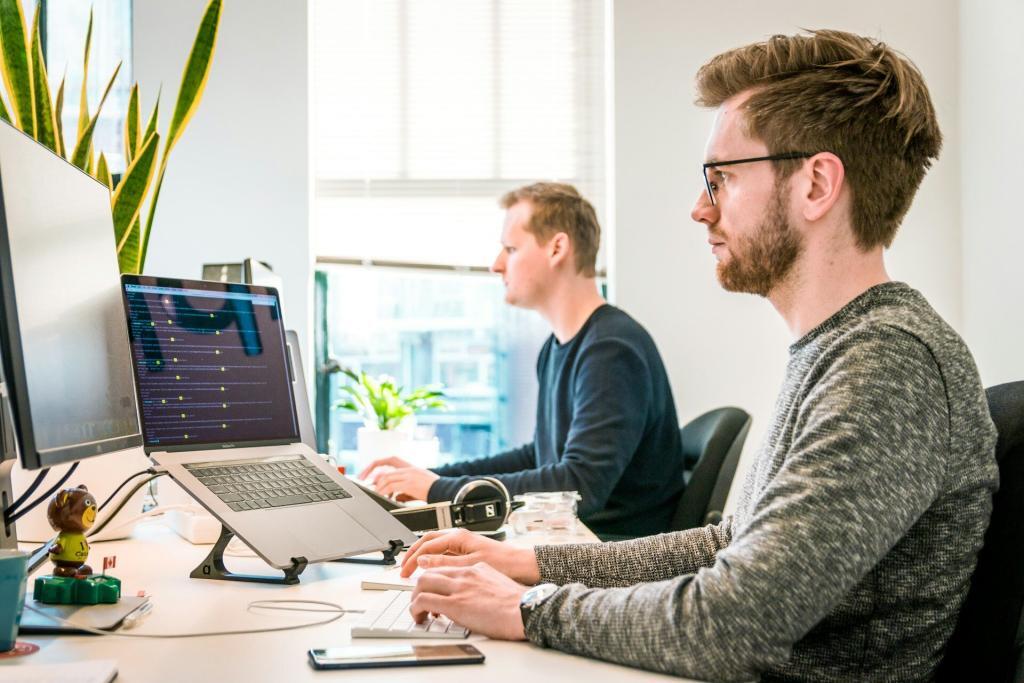In today’s digital-first world, screen time is an unavoidable aspect of the modern workplace. Employees rely on computers, tablets, and smartphones for everything from email communication to project management. However, excessive screen time can lead to decreased productivity, eye strain, and even long-term health issues.
As a business owner or manager, you want to ensure that your employees remain efficient and healthy while making the most of their screen time. Implementing structured screen time management solutions can significantly improve focus, morale, and overall productivity.
This article explores the impact of excessive screen time on employees, provides actionable strategies to create a balanced digital work environment, and highlights how Managed IT Services can help businesses optimize screen use while enhancing cybersecurity and efficiency.
Understanding the Impact of Excessive Screen Time on Employees
Physical Health Effects
One of the most immediate consequences of excessive screen time is digital eye strain. According to Time Magazine, prolonged exposure to screens can cause dry eyes, headaches, and even blurred vision. Blue light emitted by screens can also disrupt sleep cycles, making it harder for employees to rest properly after work hours.
Additionally, spending extended periods seated in front of a screen contributes to poor posture, neck pain, and musculoskeletal disorders. Without regular movement, employees are also at risk of developing cardiovascular issues and other health complications.
Mental and Emotional Effects
Beyond physical effects, excessive screen time can lead to mental fatigue, reduced concentration, and burnout. Employees who spend too much time on screens may struggle to focus on complex tasks, leading to lower-quality work and frustration.
According to a Harvard Business Review study, constant exposure to screens, especially through virtual meetings, can contribute to “Zoom fatigue,” reducing engagement and job satisfaction.
Strategies for Managing Screen Time in the Workplace
Addressing excessive screen time in the workplace requires a structured approach that balances productivity with well-being. Here are some key strategies that can help:
1. Establish Screen-Free Zones
Designate specific areas in the workplace where employees can take breaks away from screens. Break rooms, lounge areas, and outdoor spaces can serve as screen-free zones, encouraging face-to-face interactions and mental resets.
By implementing these zones, companies can help employees refresh their minds and reduce the negative impact of screen overuse. Encouraging lunch breaks away from desks is another effective way to limit unnecessary screen exposure.
2. Encourage the 20-20-20 Rule
The 20-20-20 rule is a simple and effective way to reduce eye strain. Every 20 minutes, employees should take a 20-second break and focus on something 20 feet away. This small habit can significantly alleviate digital eye strain and improve concentration throughout the day.
Encouraging the use of anti-glare screens and blue light filters can also mitigate eye fatigue, helping employees maintain better visual health.
3. Use Productivity Monitoring Software
Utilizing employee monitoring software can provide insights into screen usage patterns and highlight areas where excessive screen time might be hindering productivity. According to PCMag, tools like Time Doctor and Hubstaff help businesses track time spent on different tasks, ensuring that screen time is being used efficiently.
By analyzing this data, business owners can determine whether employees are overworking or mismanaging their time, allowing for tailored interventions.
4. Implement Scheduled Breaks and Non-Digital Activities
Encouraging scheduled breaks can help employees reset and refocus. Consider implementing workplace policies that include short breaks every hour to promote better workflow management.
Additionally, incorporating non-digital activities such as standing meetings, brainstorming sessions with whiteboards, or team-building exercises can reduce reliance on screens while keeping engagement high.
5. Promote Alternative Communication Methods
While digital communication tools like Slack and email are convenient, they can also lead to an overload of screen-based interactions. Encouraging face-to-face conversations, phone calls, or even walking meetings can help reduce unnecessary screen exposure while fostering stronger team connections.
Leveraging IT Services for Effective Screen Time Management
Business owners can take advantage of Managed IT Services to implement effective screen time management solutions. IT providers offer various productivity-enhancing tools, cybersecurity measures, and employee monitoring solutions to optimize screen use.
Enhancing Cybersecurity While Managing Screen Time
One of the primary concerns of screen overuse is cybersecurity risks. Employees spending excessive time online may become more vulnerable to phishing scams, malware, or data breaches.
By utilizing Managed IT Services: Cybersecurity, businesses can ensure their employees work within a secure digital environment while limiting exposure to potential threats.
Using AI-Driven Insights for Screen Time Optimization
AI-driven monitoring tools can provide real-time insights into how employees are utilizing their screens. These tools can detect inefficiencies and suggest changes that improve work-life balance and productivity.
Companies like Trinity Solutions Inc. offer Managed IT Services: Technology Support, helping businesses integrate AI-based solutions for a more structured and efficient workflow.
Implementing Screen Time Policies with IT Support
With professional IT support, companies can establish and enforce screen time policies that align with their specific business goals. By setting access restrictions, monitoring work patterns, and optimizing digital tools, businesses can create a healthier work environment that maximizes efficiency.
Conclusion: Prioritize Screen Time Management for a Healthier, More Productive Workplace
While technology is essential for modern business operations, excessive screen time can hinder employee productivity, health, and well-being. By implementing structured screen time management strategies, businesses can create a more balanced and efficient work environment.
Investing in Managed IT Services ensures that screen time policies are effectively enforced while maintaining strong cybersecurity measures and operational efficiency. Through strategic planning and the right digital tools, business owners can foster a healthier workplace where employees thrive both mentally and physically.
To learn more about optimizing your workplace technology while improving screen time management, explore Trinity Solutions Inc.’s IT Services.





